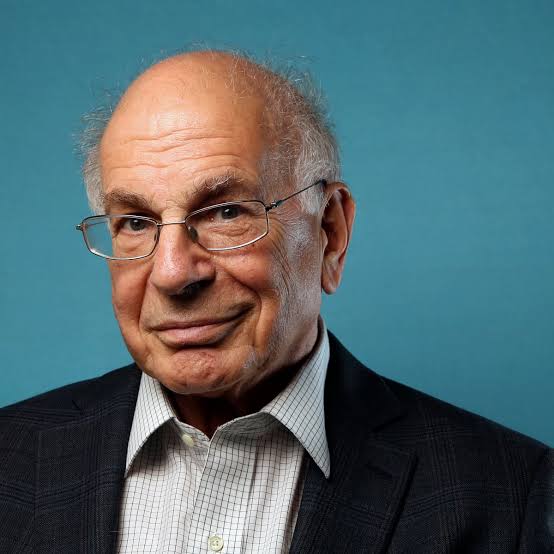What Marketers Can Learn from Daniel Kahneman
Understanding Behavioural Economics to Drive Better Marketing
Daniel Kahneman, the Nobel Prize-winning psychologist, has profoundly influenced how we understand human behaviour, decision-making, and cognitive biases. His work, particularly his collaboration with Amos Tversky, has reshaped the fields of economics, psychology, and – most importantly for us – marketing.
Kahneman’s theories reveal the often irrational, unconscious forces that drive consumer behaviour. Understanding these insights allows marketers to craft campaigns that better align with how people actually think, rather than how we assume they should think.
The Marketing Made Clear Podcast
Check out the Marketing Made Clear Podcast on all good platforms including Spotify:
Who is Daniel Kahneman?
Daniel Kahneman was born in 1934 and became a leading figure in cognitive psychology and behavioural economics. His groundbreaking work reshaped our understanding of decision-making, challenging the traditional economic assumption that humans are rational decision-makers.
Instead, he demonstrated that cognitive biases and heuristics shape our choices, often leading to predictable errors in judgment. His research has had a profound impact across multiple disciplines, including marketing, finance, and public policy, by revealing the systematic ways in which human thinking deviates from logic and rationality.

His seminal book, Thinking, Fast and Slow (2011), distilled decades of research into an accessible exploration of the two systems that govern our thinking:
-
System 1 (Fast Thinking): Intuitive, automatic, and emotional. This system governs snap judgments and unconscious biases.
-
System 2 (Slow Thinking): Deliberate, rational, and effortful. This system is responsible for logical reasoning and analytical thought.
For marketers, Kahneman’s work offers a roadmap for tapping into these mental processes to influence consumer decisions in a way that is ethical, effective, and deeply rooted in human psychology.
Key Concepts from Kahneman’s Work That Marketers Must Understand
1. Cognitive Biases and Heuristics: The Mental Shortcuts of Consumers
Daniel Kahneman’s research with Amos Tversky revealed that people rely on mental shortcuts (heuristics) to make decisions quickly. These shortcuts can lead to systematic biases, which marketers can leverage or mitigate in their campaigns.
Some of the most relevant biases for marketing include:
-
The Availability Heuristic: People judge the likelihood of an event based on how easily they can recall similar instances. One of the key learnings for marketers is that brand exposure matters. If consumers frequently see your brand, they are more likely to recall it when making a purchasing decision.
-
The Anchoring Effect: People rely heavily on the first piece of information they receive (the “anchor”) when making decisions. So, as marketers, it’s important to set a strong price anchor – such as showing a higher “original price” before revealing a discount – to make deals seem more valuable.
-
Loss Aversion: People fear losses more than they value equivalent gains. So it’s important to frame messaging around avoiding loss rather than just highlighting benefits. Example: “Don’t miss out on this exclusive deal” is more compelling than “Get this deal today.”
-
Confirmation Bias: Consumers seek out information that reinforces their existing beliefs. Make sure you tailor messaging to align with your target audience’s worldview and reinforce positive brand perceptions.

2. The Dual-System Theory and Its Role in Consumer Decisions
Understanding the interplay between System 1 and System 2 thinking can help marketers optimise their campaigns.
-
System 1 (Fast Thinking) in Marketing: This system processes visual and emotional cues instantly. Advertisers leverage System 1 by using strong imagery, storytelling, and emotional appeals.
-
Example: Coca-Cola’s holiday campaigns evoke nostalgia and warmth, tapping into instant emotional recognition.
-
-
System 2 (Slow Thinking) in Marketing: This system is engaged when consumers compare products, read reviews, or make high-stakes decisions.
-
Example: B2B marketers use white papers, testimonials, and detailed explanations to appeal to rational analysis.
-
Great marketing balances both systems: capturing immediate attention (System 1) while providing enough depth for those who need to justify their decisions (System 2).
3. Prospect Theory: The Psychology of Value Perception
Kahneman and Tversky’s Prospect Theory explains how people perceive gains and losses asymmetrically.
-
The Endowment Effect: People overvalue things they already own. One of the ways we can use this to our advantage is offering free trials and “Try Before You Buy” strategies – these work because consumers become attached to the product, making them reluctant to part with it.
-
Framing Effect: The way information is presented alters perceptions: A price framed as “only 50p a day” seems far more appealing than “£15 per month.”
-
Diminishing Sensitivity to Gains and Losses: People feel the impact of their first discount far more than additional reductions. Marketing takeaway: A “50% off” offer is more impactful than two sequential “25% off” deals.
4. The Peak-End Rule: How Consumers Remember Experiences
Consumers do not remember every detail of an experience.
Instead, they judge experiences based on two factors:
- The Peak: The most intense moment (positive or negative)
- The End: How the experience concludes
Research suggests that people disproportionately recall the peak moments – either the most pleasurable or painful – and the final moments of an interaction.
This psychological tendency has significant implications for marketing, customer service, and branding strategies. Ensuring that consumers have a positive peak experience and a satisfying conclusion can lead to stronger brand loyalty, increased word-of-mouth recommendations, and higher customer retention rates.
The key learning for marketers is to ensure that brand experiences leave a strong emotional peak and end on a high note. For example, luxury hotels invest heavily in farewell experiences, ensuring that guests leave with a positive last impression.
5. Choice Overload and the Paradox of Decision-Making
Kahneman’s work suggests that too much choice overwhelms consumers, leading to decision paralysis. When faced with an abundance of options, individuals may feel anxious about making the wrong choice, ultimately delaying their decision or avoiding it altogether. This phenomenon, known as “choice overload,” can negatively impact consumer satisfaction and engagement. Businesses that offer simplified choices, structured decision-making processes, or guided recommendations can help mitigate this effect, leading to a more seamless and positive customer experience.
The Marketing takeaway: Streamline options. Instead of overwhelming consumers with endless variations, use curated selections and personalised recommendations.
Example: Netflix uses algorithms to simplify choices by highlighting “Top Picks for You.”
How Marketers Can Apply Kahneman’s Work in Practice
-
Use Storytelling to Engage System 1: People remember narratives far more than facts. Strong storytelling evokes emotions and makes your brand more memorable.
-
Leverage Framing for More Effective Pricing: The way you present prices and deals influences consumer perception.
-
Simplify Decision-Making: Reduce choice paralysis by guiding customers with clear recommendations.
-
Appeal to Loss Aversion: Structure messaging around preventing losses rather than simply gaining benefits.
-
Create Memorable Experiences: Focus on the peak moments of your brand interaction and ensure positive endings.
-
Test and Refine Marketing Messages: Run A/B tests to see which messages resonate best based on cognitive biases.
Final Thoughts: The Future of Marketing with Kahneman’s Insights
Daniel Kahneman’s work is a goldmine for marketers who want to go beyond surface-level tactics and understand the deep psychological drivers of consumer behaviour. As marketing evolves, those who master behavioural science will stand out by crafting campaigns that resonate on a deeper, more intuitive level.
By integrating Kahneman’s principles, marketers can create more effective, ethical, and impactful strategies—ones that align with the way people actually think and behave, rather than how we wish they did.
Want more insights like this? Stay tuned to Marketing Made Clear for deep dives into the psychology behind great marketing.


